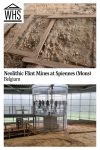Neolithic Flint Mines at Spiennes (Mons)
By Rachel Heller
What are the Neolithic Flint Mine at Spiennes?
These flint mines near Mons, Belgium, are the earliest and largest Neolithic mines ever found. They date to between 4,300 and 2,200 BC and there are thousands of shafts spread over 190 hectares (470 acres). Some of them go as deep as 16 meters (52 feet).
Neolithic miners used the flint they extracted to make axe heads and other tools, improving their technology over time. Up on the surface, they worked the stone they extracted into the tools, leaving discarded flint scattered on the ground.
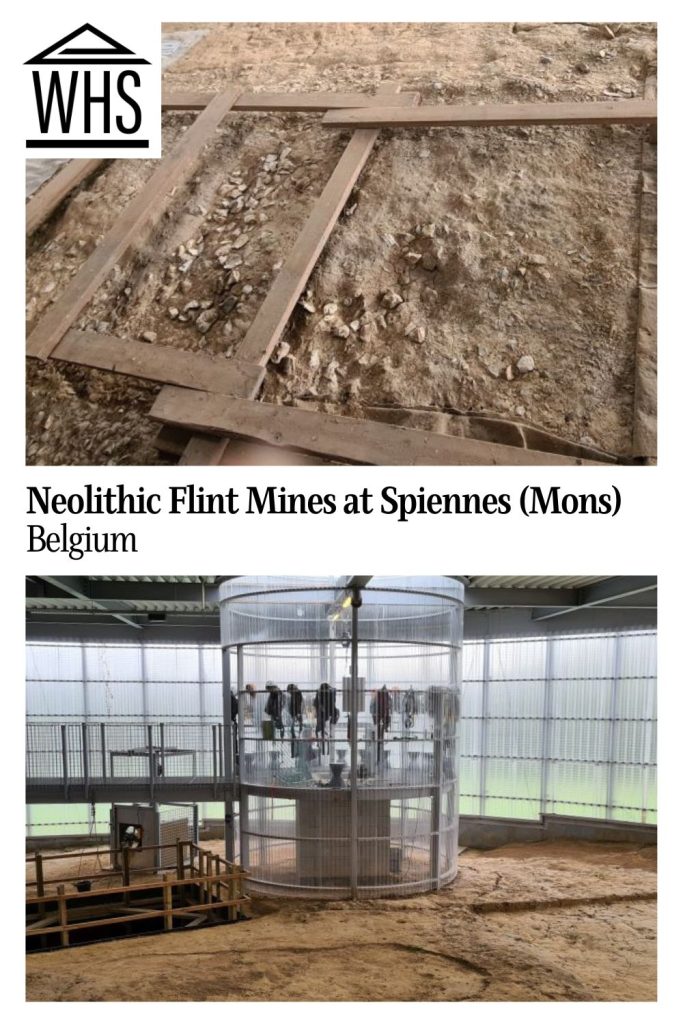
Since the Neolithic period, the site has barely been touched, not even for agriculture because of the amount of flint all over the site. At one point in the 19th century flint was mined again, but it didn’t damage much of the site. Later in the 19th century, the building of a rail line through the site is what led archeologists to discover the mines.
The land is primarily chalk, with veins of flint within it. The neolithic miners dug under the layers of flint, supporting it with the chalk walls and with sticks they placed. Then they removed the supports to free blocks of flint. They could only use particular sizes to shape the axe heads and other tools, so whatever was too small or shaped wrongly they just discarded on the surface.
Disclosure: This article contains affiliate links. Making a purchase through an affiliate link will mean a small commission for this website. This will not affect your price. Privacy policy.
Why are these Neolithic Flint Mines a UNESCO World Heritage site?
The flint mines are evidence of a “seminal stage of human technological development,” according to UNESCO’s listing, and “provide exceptional testimony to early human inventiveness and application.” There seems to have been a certain standardization in their above-ground tool-making, which in itself was innovative.
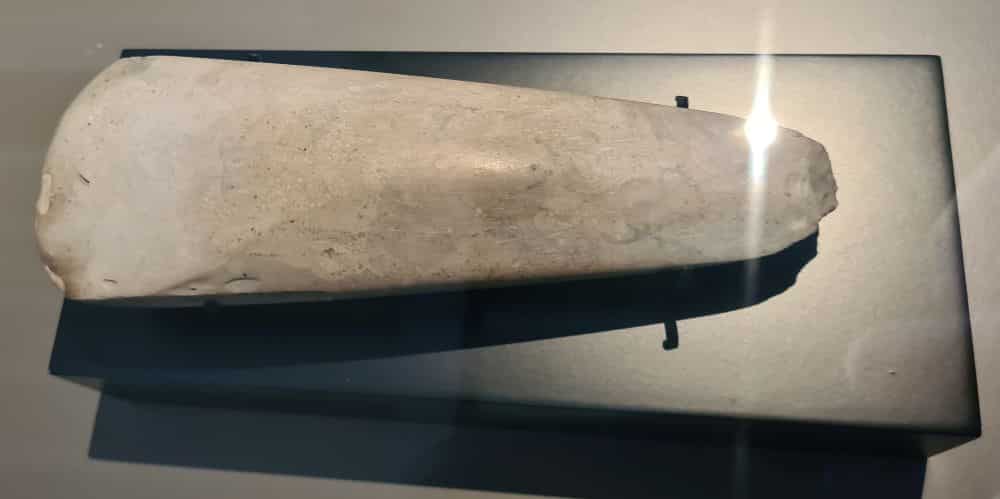
What can you expect on a visit to the Neolithic Flint Mines at Spiennes?
First of all, don’t be thrown off by road signs pointing to “Silex’s.” That seems to be the name for the place locally; silex means “flint.”
It’s a very unassuming place: a parking lot, a field, and a low round building that serves as its visitors center. Walking the boardwalk that leads between the parking lot and the visitors center, you’ll also notice some temporary buildings and other equipment across the field – I believe they may have to do with continuing archeological investigations.
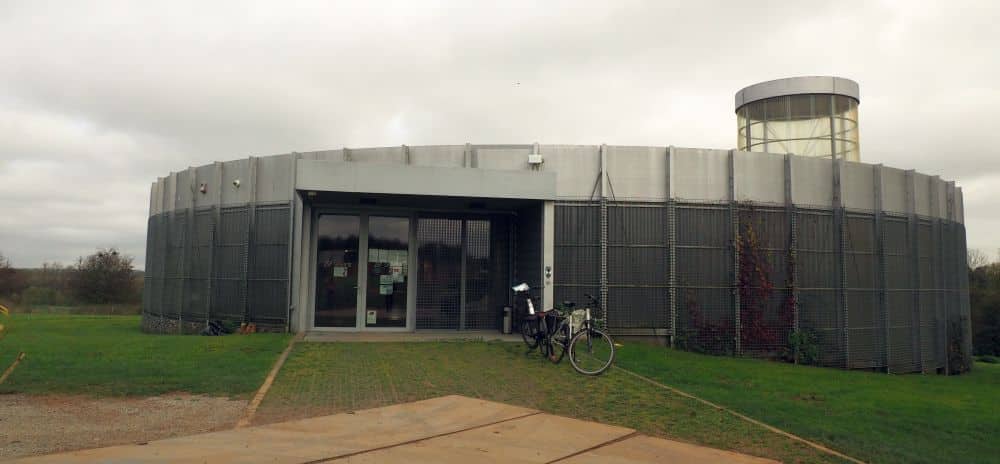
Inside the visitors center, displays explain artifacts from the site, and they explain how neolithic-era people mined the flint. Many of the artifacts are actually copies, but not all. There are several videos that demonstrate how the tools were made. The majority of the space, though, is open to the ground, and one section of that space shows what the fields of stones look like under the vegetation.
The real highlight, though, is the circular structure that tops an entrance to one of the mines. If you book ahead – we didn’t – you can go down into this mine, about ten meters (33 feet) deep. This involves putting on safety vests and helmets and climbing down a ladder.
But don’t worry. If the tour is full – they only take 12 people down at a time and only offer the tours on certain days – there’s a virtual tour available. Via a touchscreen you can “move” around a series of caves. To be honest, from the virtual tour it looks like there’s not much to see down there but the chalk walls of the mine.
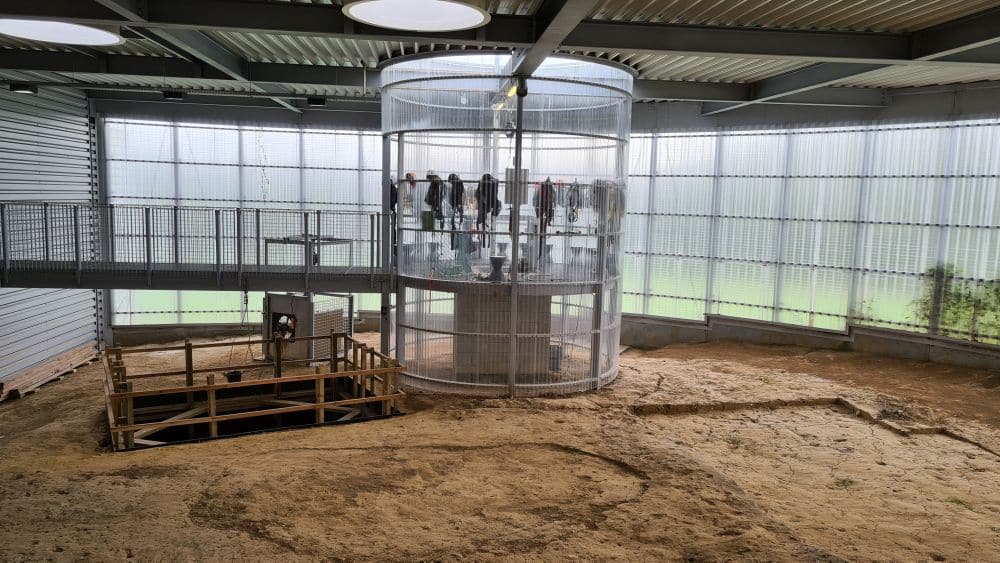
The site also has some walking trails, which we didn’t try. The area around the site is a nature reserve and these walking trails of various lengths take you through it, as well as pointing out sites related to the Neolithic society that used this area.
If you’re planning to stay in Mons, book your accommodations here.
Are the Neolithic Flint mines at Spiennes worth visiting?
Not really, unless Neolithic history and society is a particular interest of yours. There’s really not much to see here, though they do seem to try to make it fun for children. Of course, if you’re in Mons anyway, you might as well stop in.
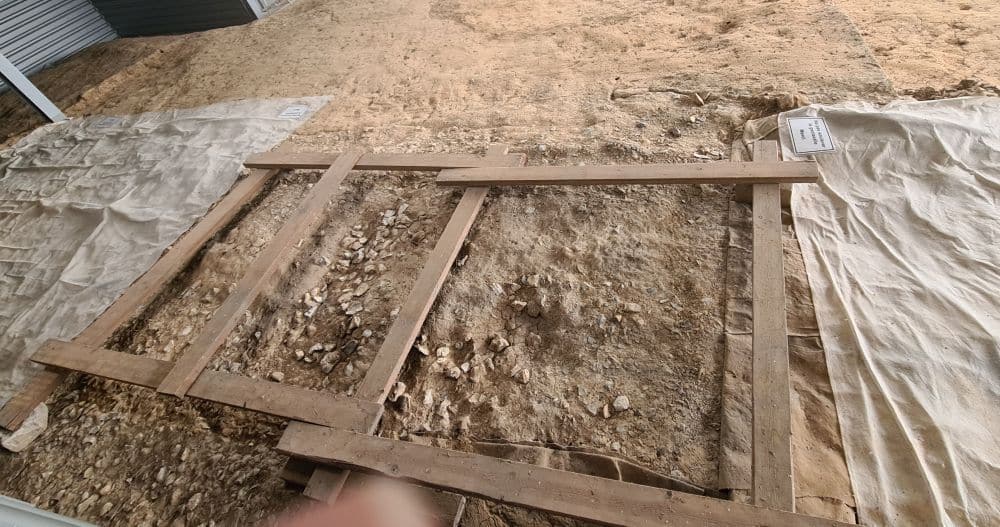
Tips for visiting Silex’s
The site closes for the winter from the end of October to mid-March.
The visitors center offers tours of the mine only on Saturdays, Sundays and holidays at 14:00 and cost extra on top of the admission to the visitors center. Booking ahead of time is required; call +32 65 33 55 80.
While the walkway to the visitors center and the exhibits inside are wheelchair accessible, the mine tour is not. Children younger than 10 years old are not allowed on the mine tour.
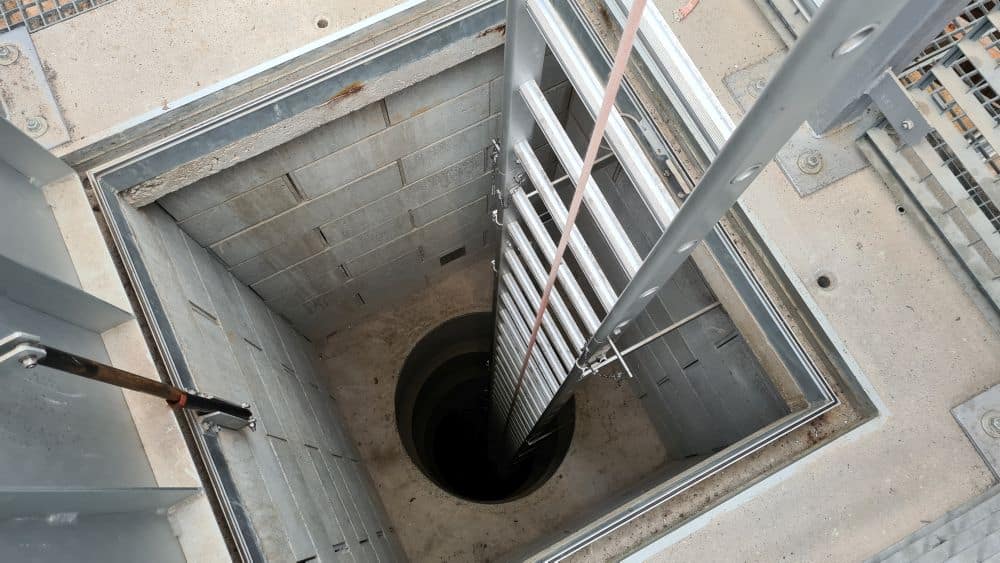
Take a look at some of the other UNESCO sites in Belgium, particularly the collection of belfries and the Flemish beguinages.
Where are the Neolithic Flint Mines at Spiennes?
The address is Place de Spiennes but our GPS followed Rue de Nouvelles and then we followed the Silex’s signs. It’s seven kilometers from Mons, which is about a 10-minute drive. Or you can take bus 134 or 34 from Mons. It’s a 40-minute drive from Charleroi.
For more information about the Flint Mines at Spiennes, its opening hours and admission fees, see its official website.
Have you been to the Neolithic Flint Mines at Spiennes? If so, do you have any additional information or advice about this UNESCO World Heritage site? Please add your comments below!

